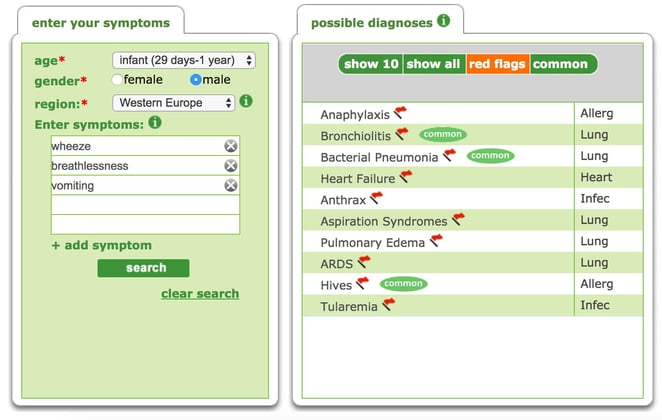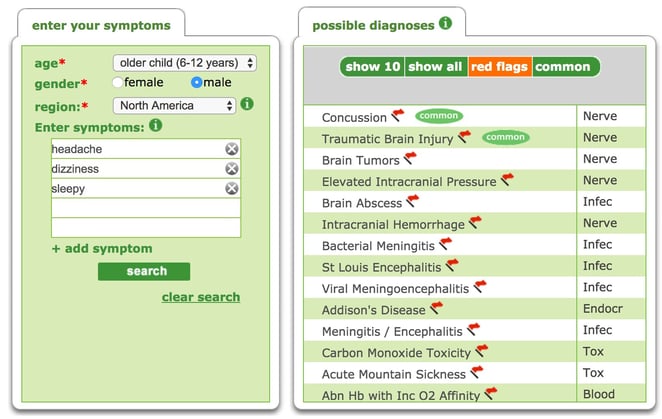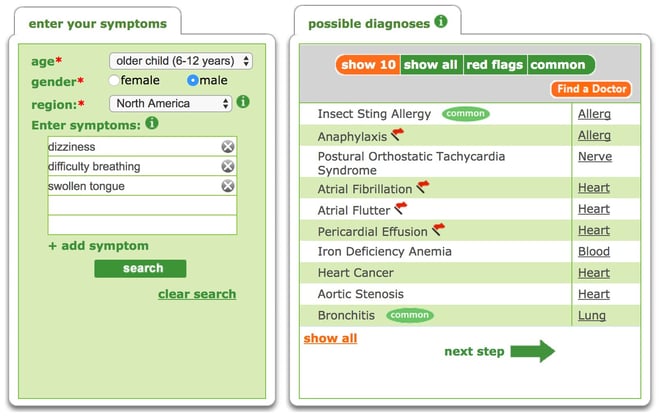- Privacy Policy
- Terms & Conditions
- Contact us
- ©Isabel Healthcare 2020
Red Flag Symptoms for Children | When should I use a symptom checker?
Keeping on top of your own health and remaining well can be difficult enough, but factoring in the health of children under your care can be extremely taxing and worrying. As parents, guardians, or even just babysitters, we feel the enormous responsibility to protect the little ones in our lives every day, and knowing the right symptoms to watch out for could help keep a child healthy, or in some cases even save their life. You may or may not know that the Isabel tools actually started out as a pediatric tool for doctors, to help stop tragic misdiagnoses like Isabel Maude’s from happening again. You can see the video on Isabel’s story here, but it is clear that Isabel Healthcare, which now has a professional tool for all ages, and a patient tool based off the same system, is rooted in pediatric health, and we understand the anxieties you may feel regarding a child’s health and wellbeing.
There are certain symptoms, particularly in children, which should never be ignored, as they could be indicating a number of serious ‘red flag’ diagnoses that need to be addressed as soon as possible by a healthcare professional. In this blogpost we will cover some of the symptoms that should raise attention to anyone caring for a child, and the actions that should be taken.
Fevers
Children are still developing all the time, and as such their body temperature can fluctuate much more quickly, and sometimes much more severely, than an in adult. In most cases, a slight fever is easily fixed with an early night, a quiet hour or so, or a child-friendly dose of calpol or tylenol. However, if your child is acting differently and a fever above 37.5C or 99.5F seems to be seriously affecting them, there is some cause for alarm. Take note of any other symptoms and place them into a credible symptom checker like Isabel. Other accompanying red flag symptoms to watch out for include:
- A rash of any sort
- A stiff neck
- Unresponsive to medication
- Sleepiness, drowsiness or loss of consciousness
- Grey in colour
- Limp, floppy limbs
- Excessive, high pitched crying, particularly in infants.
- Vomiting and/or diarrhea

Breathing Problems
Breathing issues of any kind should be taking extremely seriously. Infants under 6 months are known as ‘obligate nose breathers,’ meaning they breath exclusively through their noses, and not their mouths. This means if the nose becomes blocked in any way, the baby cannot breath efficiently. Colds and stuffy noses should be regularly unblocked using saline (saltwater) drops or a nasal aspirator. This issue is quite common and usually easily fixed, but there are some other issues in infants and children that should be treated as serious, and you should seek medical attention immediately. These include:
- Paler skin colour than usual
- A blue tinge to lips, mouth or fingernails
- Wheezing while breathing
- Chest pain
- Breathlessness with and/or without exercise
- Severe coughing
- An object lodged in the throat
- Coughing up blood
- Vomiting and nausea

Headaches
Headaches are slightly less common in children than in adults, but they can get the same sorts of headaches we do. Migraines tend to last a lot shorter, and can be over within four hours, and as with most illnesses, children tend to ‘bounce back’ a lot quicker. If there is an accompanying cold, flu or stomach bug, headaches are not too much to worry about, as long as they disappear with the associated illness. Unexplained headaches, however, are a slight cause for concern. If in doubt, place all symptoms into a symptom checker and visit your healthcare provider. Some symptoms are more serious, however, and immediate action should be taken. Serious symptoms to look out for when assessing a child’s headache include:
- Vomiting
- Dizziness
- Drowsiness
- Muscle weakness or limp limbs
- Loss of or blurred vision
- Interrupted sleep

Allergic Reactions
Children are more likely to develop allergies than adults, and quite often grow out the allergies as they grow up. If there is family history of allergies, then a child is also more likely to develop allergies themselves. Allergies can be to pollen, dust, food, and animal furs, and if your child has one allergy, they are more likely to already have, or develop, allergies to similar things. For example, an intolerance to dairy may also indicate an allergy to nuts or other foods. Asthma is also very common in children, and usually suggests associated atopic allergies such as eczema and hayfever. All of these allergies are easy to avoid or treat when they are diagnosed, but some can be life threatening, particularly if they result in anaphylaxis and especially if they are previously undiagnosed. Knowing how to spot when someone is having a severe allergic reaction can help in a time critical situation. You should seek immediate and emergency attention if a child has any of the following.
- Swelling around the eyes and mouth
- Sudden difficulty breathing
- Swelling of the lips and tongue
- A taste of metal in the mouth
- Hives, or itchy bumps, on the skin
- Flushing around face and neck
- Chest tightness
- A drop in blood pressure
- Dizziness
- Fainting or seizures

If you are concerned about any of the symptoms mentioned in this blogpost, why not put the child's symptoms into theIsabel Symptom Checker and use the "Where To Now" feature to decide what action to take:
Subscribe Here!
Recent Posts
Virtual Triage: Do more questions lead to better patient outcomes?
One of the common misconceptions related to virtual triage / symptom checker tools is that the more..Webinar: Using Virtual Triage To Transform Patient Access
Outdated contact centers are posing problems for today's health systems. As longer hold times..List Of Categories
- Differential Diagnosis Decision Support
- Differential diagnosis
- Symptom Checker
- Symptoms
- Medical Error
- Patient Disease Information
- Disease
- Diagnostic Decision Support
- Clinical Decision Support
- Isabel 1 Minute Read
- Diagnosis Error
- Diagnosis Skills Cases
- Healthcare Informatics
- Medical Education
- Patient Engagement
- Clinical Reasoning
- Evidence-based Medicine
- Symptom Triage
- Nurse Practitioner Education
- Nursing Decision Support
- Partnership
- Public Health
- COVID-19
- EHR
- Patient Empowerment
- Patient Safety
- rare disease

Start your FREE Trial today
Try the Isabel Pro DDx generator for 30-days - no payment card details required.




